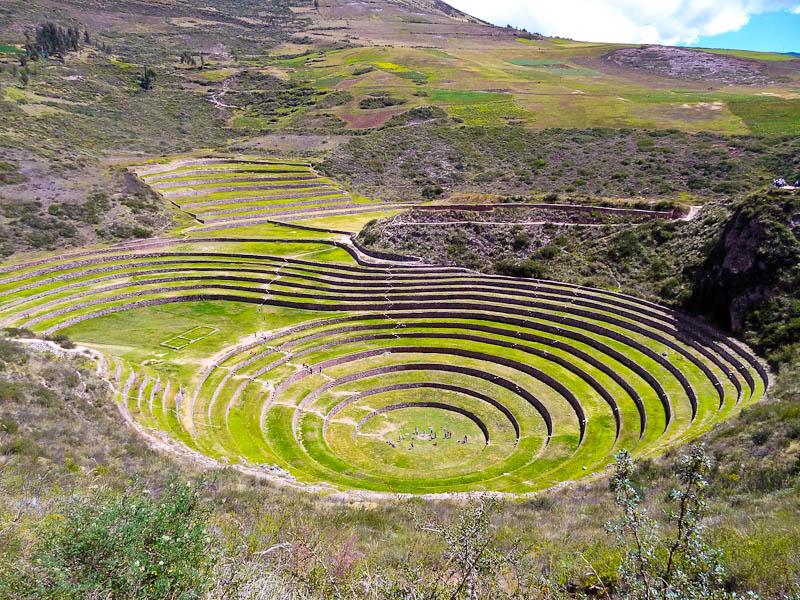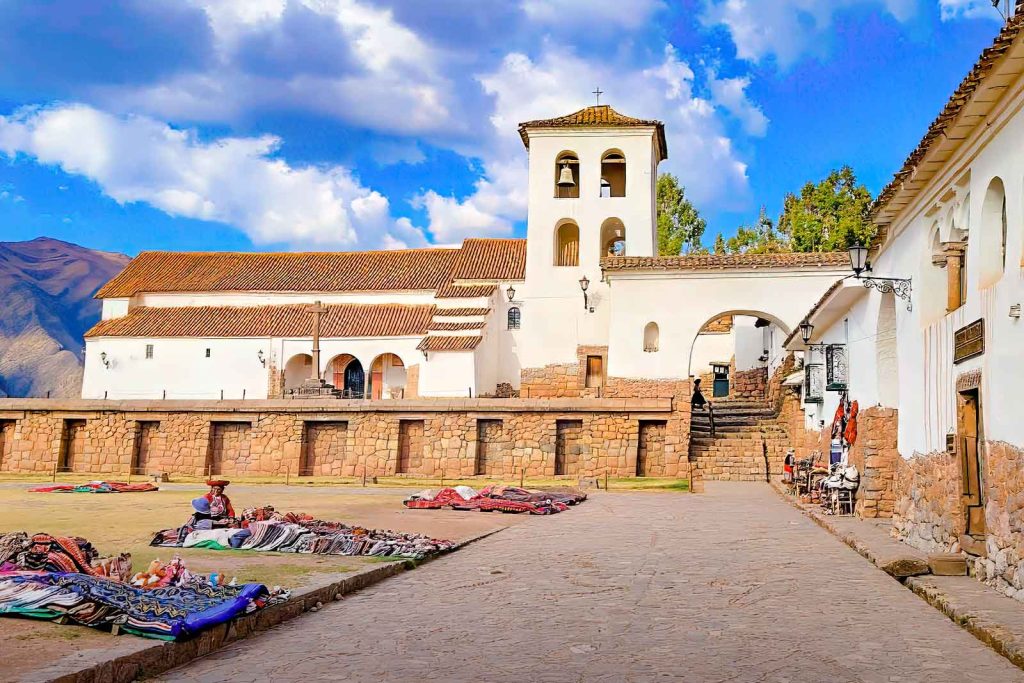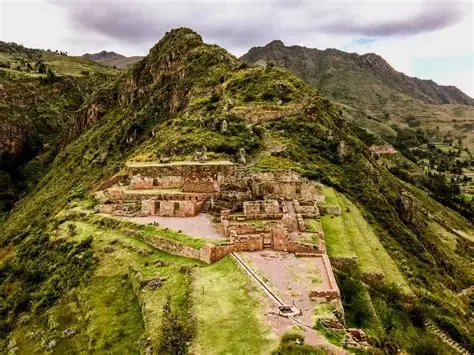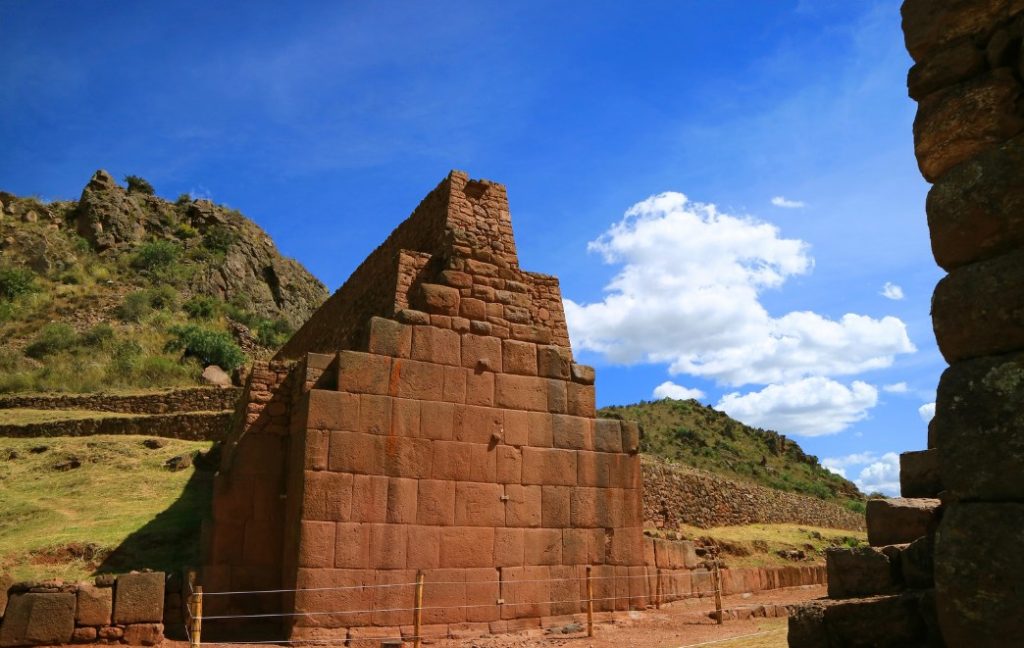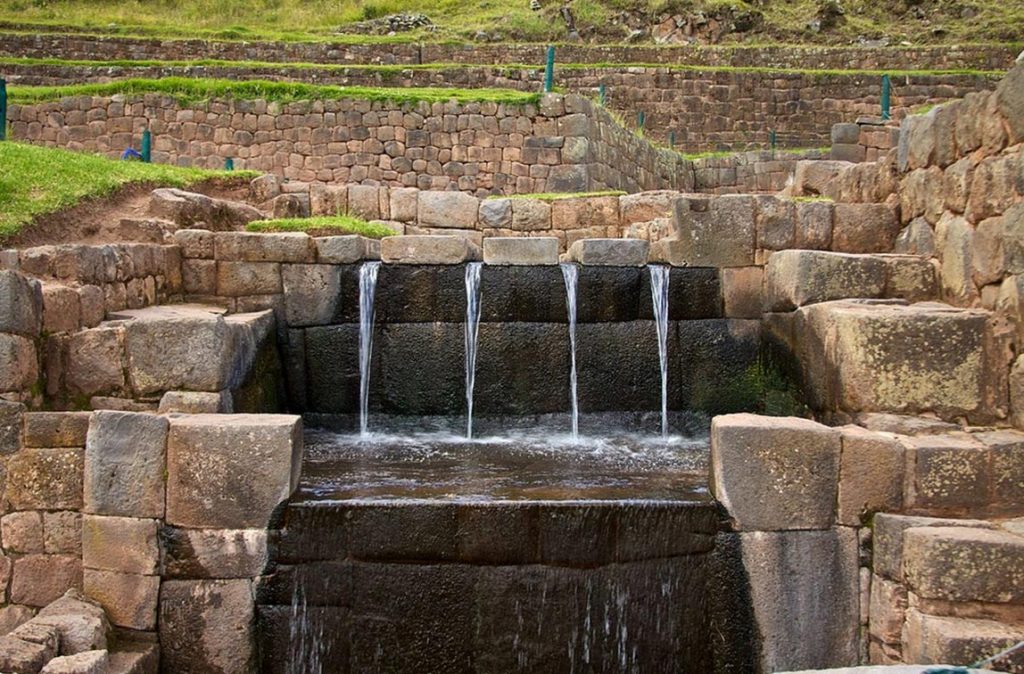When you think of the Andes Mountains and the highlands of South America, one of the first images that probably comes to mind is a woolly llama or alpaca looking curiously at the camera — and for good reason. These iconic animals are not only a symbol of Peruvian culture and tradition, but they’ve also been part of Andean life for thousands of years.
But did you know that llamas, alpacas, vicuñas, and guanacos — while all members of the camelid family — are actually quite different from each other in terms of behavior, size, habitat, fur quality, and even social roles?
In this guide, we’ll help you finally understand the real differences (and similarities) between these four majestic Andean animals. Whether you’re planning a trip to Peru, curious about the textiles you find in markets, or just fascinated by nature, you’ll leave this article with a deep appreciation for these unique camelids.
🧬 A Shared Ancestry: South America’s Camelids
All four animals — llama, alpaca, vicuña, and guanaco — belong to the Camelidae family, which includes camels. While camels evolved in Asia and Africa, these four species are native to South America, primarily found in Peru, Bolivia, Chile, and Argentina.
They are divided into two domestic species and two wild species:
| Species | Status | Domesticated | Wild |
|---|---|---|---|
| Llama | 🟢 | ✅ Yes | ❌ No |
| Alpaca | 🟢 | ✅ Yes | ❌ No |
| Vicuña | 🔴 | ❌ No | ✅ Yes |
| Guanaco | 🔴 | ❌ No | ✅ Yes |
Their common ancestor is believed to have been the guanaco, which gradually led to the evolution of domesticated llamas and alpacas. The vicuña, on the other hand, is the wild ancestor of the alpaca, and is still found in the high-altitude plateaus of Peru and Bolivia.
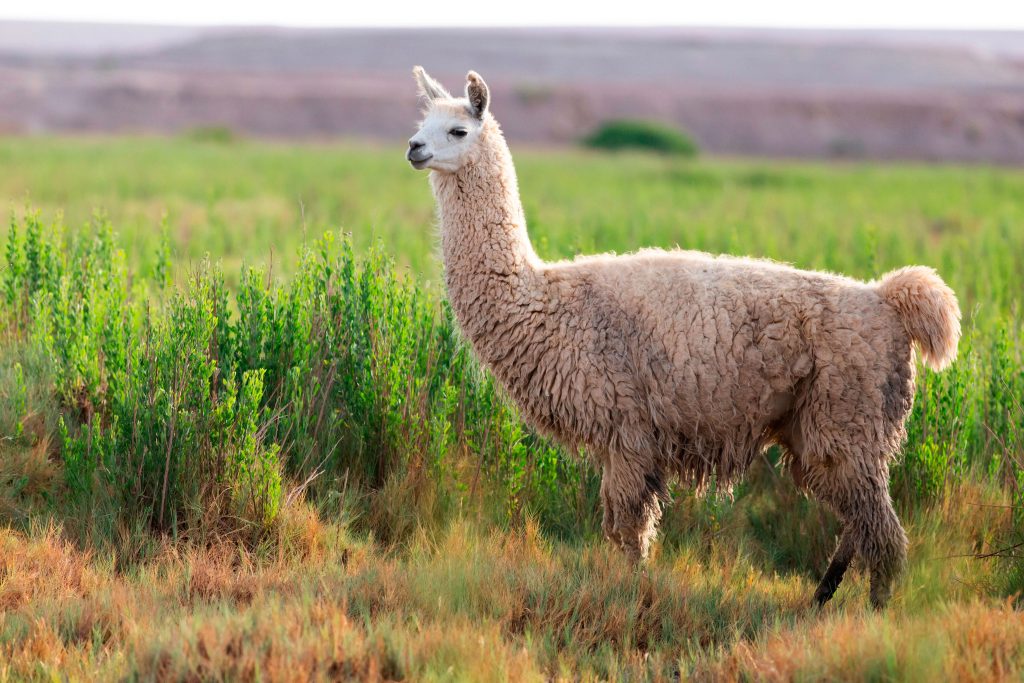
🦙 The Llama: The Hard-Working Transporter
📌 Quick Facts
- Size: 1.7–1.8 meters tall (about 5.5–6 ft)
- Weight: 130–200 kg (280–440 lbs)
- Use: Pack animal, meat, wool (coarser than alpaca)
- Temperament: Independent, sometimes stubborn
The llama is the largest and strongest of the South American camelids. Domesticated over 4,000 years ago by the Incas, llamas were — and still are — used as pack animals in the Andes. Their strength, endurance, and adaptability make them perfect for transporting goods across mountainous terrain.
Llamas are social but more independent than alpacas. They tend to be more curious, alert, and territorial, and are often used to guard flocks of sheep or alpacas from predators like foxes or stray dogs.
Their fur is thicker and more rugged — ideal for making ropes, rugs, and outerwear, but not as soft as alpaca fiber.
💡 Did you know? Llamas can carry loads of up to 25–30% of their body weight for several kilometers across steep trails.
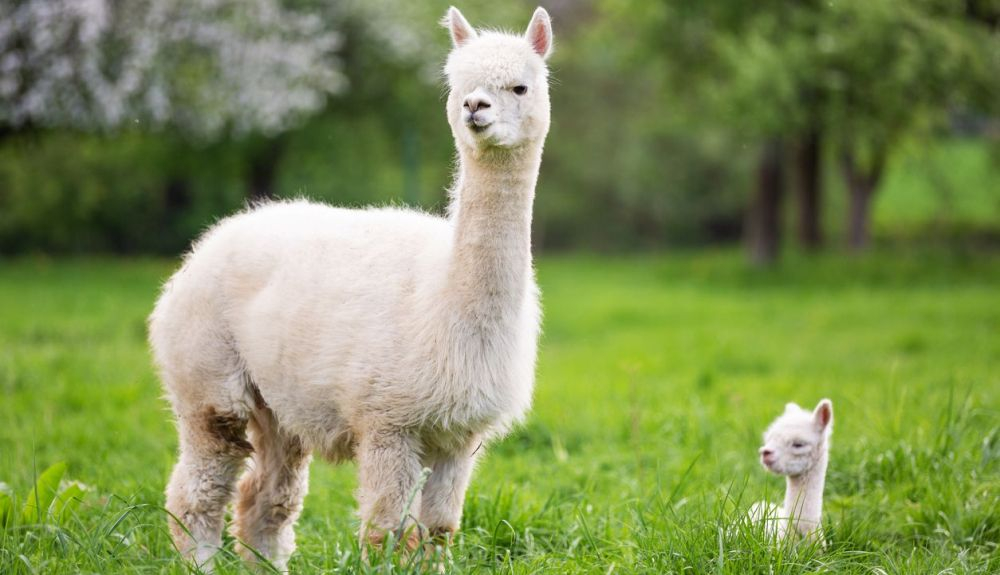
🧸 The Alpaca: The Gentle Wool Producer
📌 Quick Facts
- Size: About 0.9 meters tall at the shoulder (3 ft)
- Weight: 55–65 kg (120–145 lbs)
- Use: Fiber production (soft, luxurious wool)
- Temperament: Shy, calm, friendly
Unlike the llama, the alpaca is smaller, more delicate, and highly valued for its incredibly soft fleece. Alpacas were domesticated from vicuñas approximately 6,000 years ago, and they’ve been prized by Andean cultures ever since for producing one of the finest natural fibers in the world.
There are two types of alpacas:
- Huacaya: Fluffy, dense fleece that grows outward like a teddy bear.
- Suri: Long, silky, wavy fleece that hangs down in strands.
Alpacas are gentle and social. They often live in herds, communicate through soft humming, and rarely spit (unlike llamas). Their wool comes in over 22 natural colors, from white and beige to brown, gray, and black.
🎽 Fun fact: Alpaca wool is warmer, lighter, and more breathable than sheep’s wool — and it’s also hypoallergenic.
🦙🧸 Llama vs. Alpaca: How to Tell Them Apart
| Feature | Llama | Alpaca |
|---|---|---|
| Size | Larger, taller | Smaller, shorter |
| Face | Long, banana-shaped ears | Short, rounded ears |
| Nose | Elongated snout | Blunt nose |
| Fiber | Coarser, used for utility | Fine, soft, used for garments |
| Temperament | Confident, alert, protective | Shy, gentle, herd-oriented |
| Main Role | Transport, meat, guard animal | Fiber production |
📸 Pro Tip for Travelers: If you see a fluffy, small animal with a “cute” face and soft wool — that’s likely an alpaca. If it’s taller with a longer face and upright posture, it’s a llama!
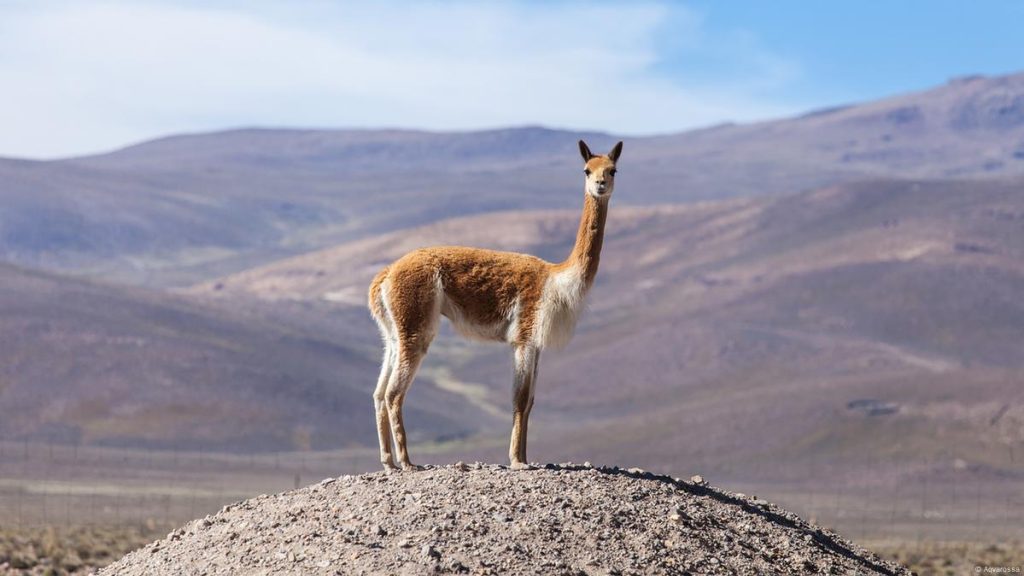
🦌 The Vicuña: The Wild and Elegant Queen of the Andes
📌 Quick Facts
- Size: 0.8–1.0 meters at the shoulder (2.6–3.3 ft)
- Weight: 35–50 kg (77–110 lbs)
- Use: Source of the finest natural fiber in the world
- Status: Wild, protected species
- Temperament: Extremely shy and alert
The vicuña is a graceful, wild camelid that lives at altitudes above 4,000 meters (13,000 ft) in the Andean highlands of Peru, Bolivia, Chile, and Argentina. It is the smallest and most elegant of the four species, with a long, slender neck and large, expressive eyes.
Its fur — especially the soft golden-brown coat — is extraordinarily fine and warm, making vicuña wool the most expensive and luxurious in the world, often referred to as the “fiber of the gods.” One kilo of vicuña fiber can sell for thousands of dollars.
However, vicuñas can’t be domesticated and are only shorn once every 2–3 years under strict government programs known as “Chaccu,” which mimic ancient Incan rituals. The wool is collected sustainably and without harming the animal.
🌱 Conservation Note: Vicuñas were once nearly extinct due to poaching and habitat loss. Thanks to strict protection laws and community management, their population has rebounded to over 350,000 individuals, especially in Peru, where they are considered a national symbol.
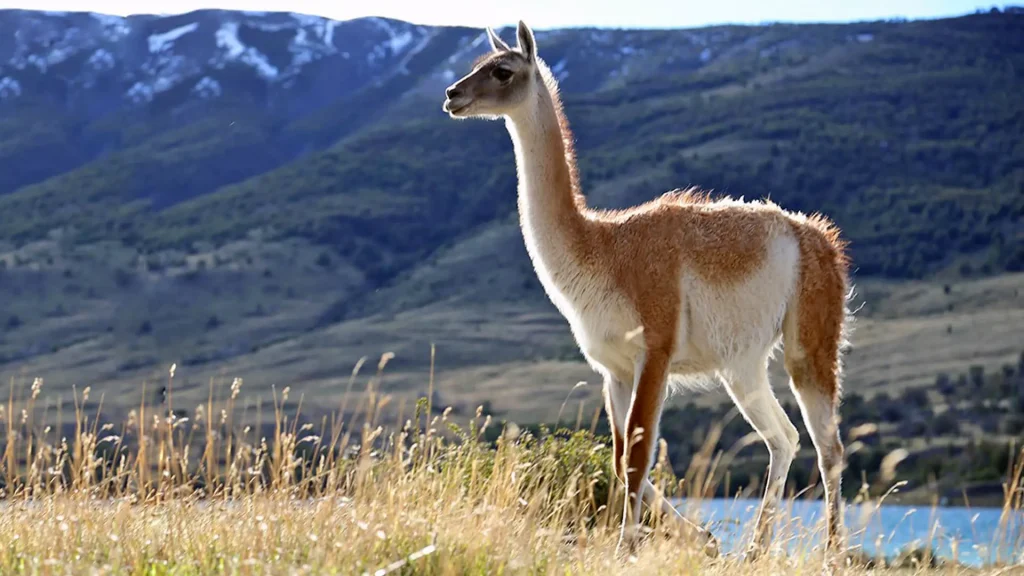
🐪 The Guanaco: The Wild Ancestor of the Llama
📌 Quick Facts
- Size: 1.0–1.2 meters at the shoulder (3.3–4 ft)
- Weight: 90–140 kg (200–310 lbs)
- Use: Wild species; sometimes herded for meat or wool
- Status: Wild, but more adaptable than the vicuña
- Temperament: Alert, hardy, and adaptable
The guanaco is the wild cousin of the llama, and it roams freely in the open plains, grasslands, and highlands of southern Peru, Chilean Patagonia, and Argentina, including Tierra del Fuego. It is larger than the vicuña and slightly smaller than the llama.
Guanacos are incredibly resilient, surviving in harsh, arid, and windy environments. They are excellent runners, capable of reaching speeds up to 56 km/h (35 mph) to escape predators like pumas.
While not traditionally domesticated, guanacos are sometimes herded in parts of Argentina and Chile for meat and soft wool, though not at a commercial scale.
🌾 Ecological Role: Guanacos are vital for the ecosystem. As herbivores, they help maintain grasslands and serve as prey for native predators, contributing to the balance of Andean and Patagonian ecosystems.
🦙🦌 Vicuña vs. Guanaco: The Wild Camelid Showdown
| Feature | Vicuña | Guanaco |
|---|---|---|
| Size | Smallest of the four | Slightly smaller than llama |
| Coat | Short, very fine, cinnamon-colored | Light brown with white underbelly |
| Wool Value | Ultra-luxurious and expensive | Softer than llama, less than vicuña |
| Behavior | Extremely shy and hard to approach | Hardy, fast, more approachable |
| Habitat | High-altitude Andes | Highlands and Patagonian lowlands |
| Conservation | Protected and monitored | Stable in the wild |
🔍 Fun Observation: Vicuñas are delicate and regal, often seen in small groups standing still, watching carefully for danger. Guanacos, on the other hand, are robust and energetic, often found in larger groups or sprinting across the steppe.
🌎 Habitat and Altitude: Where You’ll Find Each Species
One of the main differences among these camelids is where they live and how they’ve adapted to their environments.
| Species | Natural Habitat | Altitude Range (meters) |
|---|---|---|
| Llama | Highlands, valleys | 2,500 – 4,000 |
| Alpaca | High Andes, cold plains | 3,500 – 4,800 |
| Vicuña | Puna grasslands, remote highlands | 3,800 – 5,000 |
| Guanaco | Andes & Patagonian plains | 0 – 4,500 |
📌 Note: If you’re visiting Cusco, Arequipa, Puno, or Huaraz, you’re in prime territory to see llamas and alpacas. For vicuñas, you’ll likely need to go into remote protected areas like Reserva Nacional de Salinas y Aguada Blanca or Reserva Pampa Galeras.
🧬 Genetic Differences and Domestication Paths
Scientists have studied the DNA of camelids extensively. Here’s what’s been confirmed:
- Llamas are domesticated descendants of guanacos.
- Alpacas descend from vicuñas, not llamas.
- Despite their similarities, alpacas and llamas are genetically distinct and cannot produce fertile offspring together.
- Vicuñas and alpacas share the soft-fiber trait, but vicuña genes are still dominant in modern breeding programs.
🧪 Hybrid Notes:
- There are rare hybrids known as “huarizos”, the offspring of llamas and alpacas. They are usually sterile and have mixed traits.
- Hybridization between wild and domestic species is discouraged due to the risk of gene pool contamination, especially for protected vicuñas.
🐾 The Guanaco: The Wild Andean Spirit
While llamas and alpacas are domesticated species, the guanaco (Lama guanicoe) is one of the two remaining wild South American camelids, the other being the vicuña. Guanacos roam freely in the arid, mountainous regions of southern Peru, Bolivia, Chile, Argentina, and even parts of Paraguay. They are well adapted to both cold climates and high altitudes.
🔍 Physical Features
- Size & Weight: Guanacos are slightly smaller than llamas but larger than alpacas, standing around 1.0 to 1.2 meters (3.3 – 3.9 ft) at the shoulder, and weighing 90–140 kg (200–310 lb).
- Fur: Their coat is thick but not as fine as the vicuña’s, with a two-tone coloring – light brown on the back and sides, white underbelly, and a grayish face.
- Ears and Tail: Like llamas, guanacos have banana-shaped ears but slightly shorter, and their tails are less bushy.
🌿 Habitat and Behavior
- Guanacos prefer open grasslands, plateaus, and deserts, and they are known for their nimbleness on rocky terrain.
- Unlike llamas and alpacas, guanacos are extremely shy and elusive, avoiding human interaction.
- They are very fast runners, capable of speeds up to 56 km/h (35 mph), which is useful for evading predators like pumas.
🧬 Genetics and Evolution
Guanacos are believed to be the wild ancestors of llamas. Their domestication dates back more than 4,000 years, when Andean people began selecting guanacos for tameness and size, eventually leading to the modern llama.
🧵 Fiber Comparison: Which One is the Softest?
One of the key ways to differentiate between these camelids is by analyzing the quality of their fiber, especially for textile and fashion industries.
| Animal | Fiber Texture | Use | Softness (1–10) | Market Value ($/kg) |
|---|---|---|---|---|
| Llama | Coarse, long hairs | Rugs, outer garments | 4 | ~$2–$5 |
| Alpaca | Soft, silky, warm | High-end clothing, blankets | 8–9 | ~$20–$60 |
| Vicuña | Extremely fine & soft | Luxury clothing | 10 | ~$300–$500 |
| Guanaco | Fine, short hairs | Niche luxury items | 7 | ~$100–$200 |
🧠 Fun Fact: Vicuña wool is often referred to as the “fiber of the gods” and is protected under international conservation laws. A single scarf can cost thousands of dollars.
🧳 Camelids in Andean Culture and Tourism
Llamas, alpacas, vicuñas, and guanacos are not just animals; they are part of the soul of Andean culture.
🪅 Cultural Significance
- In traditional Andean beliefs, camelids are considered sacred beings, especially the vicuña, often associated with Incan mythology and royalty.
- During ancient times, the Inca would shear vicuñas only once every several years in a sacred ceremony called “Chaccu”, a tradition that still continues in some communities.
📸 Tourism and Experiences
Today, these animals are central figures in Peruvian tourism:
- Tourists love taking photos with decorated llamas and alpacas in cities like Cusco.
- Alpaca farms allow visitors to feed, shear, and interact with the animals.
- In protected reserves like Pampa Galeras, visitors can observe wild vicuñas and guanacos in their natural habitats.
🧭 Whether you’re trekking the Andes or exploring the valleys of Arequipa, spotting these camelids in their native environments is a highlight for many travelers.
🏔️ Cultural Significance in Andean Societies
The camelids of South America — particularly the llama and alpaca — have deep cultural roots in Andean societies. They are not just livestock but are intertwined with local customs, spiritual beliefs, and daily life.
🎎 Sacred Animals in the Andes
In Inca mythology and cosmology, camelids played an essential role. Llamas, especially, were seen as sacred animals. They were used in religious ceremonies and sometimes even sacrificed to the gods to ensure good harvests, rains, and protection from natural disasters.
Alpacas were symbols of prosperity and abundance due to their valuable fleece. The Incas believed that these animals were gifts from the gods and should be respected and treated well. In many indigenous rituals today, llamas and alpacas are still part of festivals and are adorned with colorful tassels and woven decorations.
🧶 Weaving and Textile Traditions
The art of weaving has been passed down through generations in the Andes, with camelid wool forming the backbone of this cultural tradition. Alpaca and vicuña fibers are especially prized for making high-quality garments.
Communities such as the Quechua and Aymara have developed incredibly detailed textile patterns, often rich in symbolism, using natural dyes and camelid fibers. These textiles are not only utilitarian but also serve as expressions of identity, status, and history.
In traditional Andean villages, you’ll often see women sitting in groups weaving intricate designs — a skill taught from childhood and one that reflects the spiritual connection they have with the animals that provide the material.
🌎 Ecological Importance and Conservation
While llamas and alpacas are domesticated, vicuñas and guanacos remain wild species and are considered vital to the high-altitude ecosystems of the Andes. Each of these species plays an important role in maintaining environmental balance.
🦙 Environmental Adaptations
Camelids are exceptionally adapted to the extreme conditions of the Andes. They can survive in high-altitude regions where oxygen levels are low, temperatures fluctuate drastically, and vegetation is scarce.
Their padded feet are well-suited for walking on rocky and uneven terrain without damaging delicate alpine vegetation — a big reason they are more environmentally friendly than hooved livestock like cattle and sheep. This trait is particularly important in fragile ecosystems like the puna grasslands and high-altitude plateaus.
🚫 Threats to Survival
Although llamas and alpacas are relatively safe due to domestication, their wild cousins — vicuñas and guanacos — have faced serious threats due to poaching and habitat loss. Vicuñas, in particular, were on the brink of extinction in the mid-20th century due to the high value of their wool.
Thanks to strict conservation efforts, especially in Peru, Bolivia, and Argentina, vicuña populations have rebounded. Today, controlled shearing programs allow communities to harvest wool without harming the animals. These programs serve as both conservation tools and sources of income for local people.
Guanacos, while more widely distributed, still face pressure from land-use changes and competition with livestock. Continued conservation efforts are necessary to protect their habitats and ensure their survival in the wild.
🧳 Where to See These Animals in Peru
If you’re planning a trip to Peru and want to get up close and personal with these amazing animals, there are many places where you can see them in their natural or semi-natural environments.
🏞️ Llamas and Alpacas: All Over the Andes
You’ll find llamas and alpacas in many parts of the Andes, particularly around tourist destinations like:
- Cusco and the Sacred Valley: These areas are full of community-run farms where you can see and interact with llamas and alpacas. Many traditional weaving centers let visitors feed the animals and learn about their wool.
- Arequipa and Colca Canyon: A great place to see herds grazing in stunning landscapes.
- Lake Titicaca region: Especially in the high plains of Puno, alpacas roam freely across the altiplano.
🏔️ Vicuñas: In the Wild
- Pampa Galeras National Reserve (Ayacucho, Peru): This reserve was created specifically to protect vicuñas. It’s one of the best places to observe them in the wild and learn about conservation efforts.
- Salinas y Aguada Blanca National Reserve (Arequipa): Besides beautiful volcanic scenery, this reserve is home to wild vicuñas and many bird species.
🌄 Guanacos: Rare but Possible
Guanacos are rarer in Peru but can be seen in remote parts of the Andes or further south in Chilean and Argentine Patagonia, where they are more abundant.

